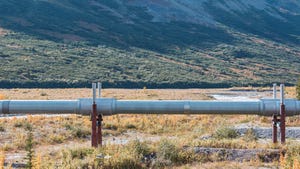Can Satellite Technology Cool Data Centers?
Microway says it has adapted technology from the satellite industry to cool data centers more efficiently.
June 25, 2007
A scientist with high performance computing vendor Microway says he has adapted technology from the satellite industry to cool data centers more efficiently. Stephen Fried, CTO and co-founder of Microway, says he has a "proof of concept for a new provisionally patented cooling system," according to Information Week, which spoke to Fried at the Securities Industry and Financial Markets Association trade show in New York City this week. An excerpt:
Fried, who has a background in space technology and chemical engineering, will not release all of the details yet, but he would say that ammonia is part of the equation. He claims he has proven that the system reduces the amount of energy required to cool data centers up to 50%. Ammonia won't damage computer and data center components, he said. "It just smells when it leaks," he said, adding that the odor is not necessarily a bad thing since it would serve as a warning.
Modern satellites use high-powered transmitters that generate large amounts of heat, creating "hot spots" in space, where there is no air to support fan cooling. Ammonia works well in zero gravity environments, and satellite makers use it in a flat heat pipe configuration that extends to radiators outside the satellite.
Use of heat pipes in computers is becoming more common, and has been implemented in laptops, game systems and high-performance PCs. AMD offers a heat pipe option with its Athlon 64 FX processor.
Ammonia has historically been used as a refigerant in large industrial systems for many years, according to Modern Building Systems, an HVAC industry jounal. In recent years York has sold hundreds of ammonia-based chillers for use in projects at Heathrow Airport and in platinum mines. The International Space Station (ISS) cools much of its systems using uses ammonia, which is pumped through a closed-loop system that collects excess heat from components and then circulates outside the station to dissipate heat. Earlier this year two NASA astronauts conducted a spacewalk to update the exterior components of the station's ammonia cooling system.
About the Author
You May Also Like







